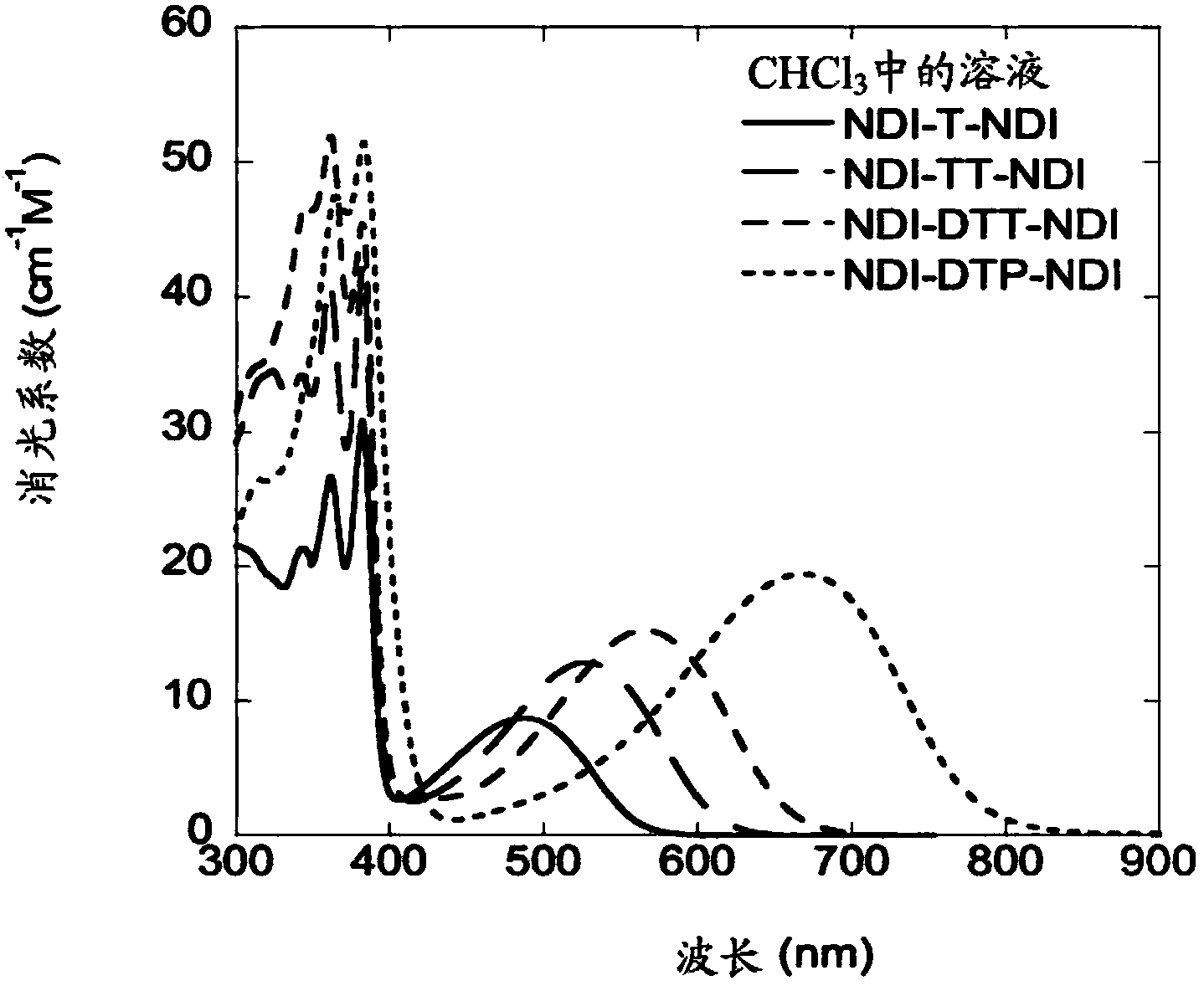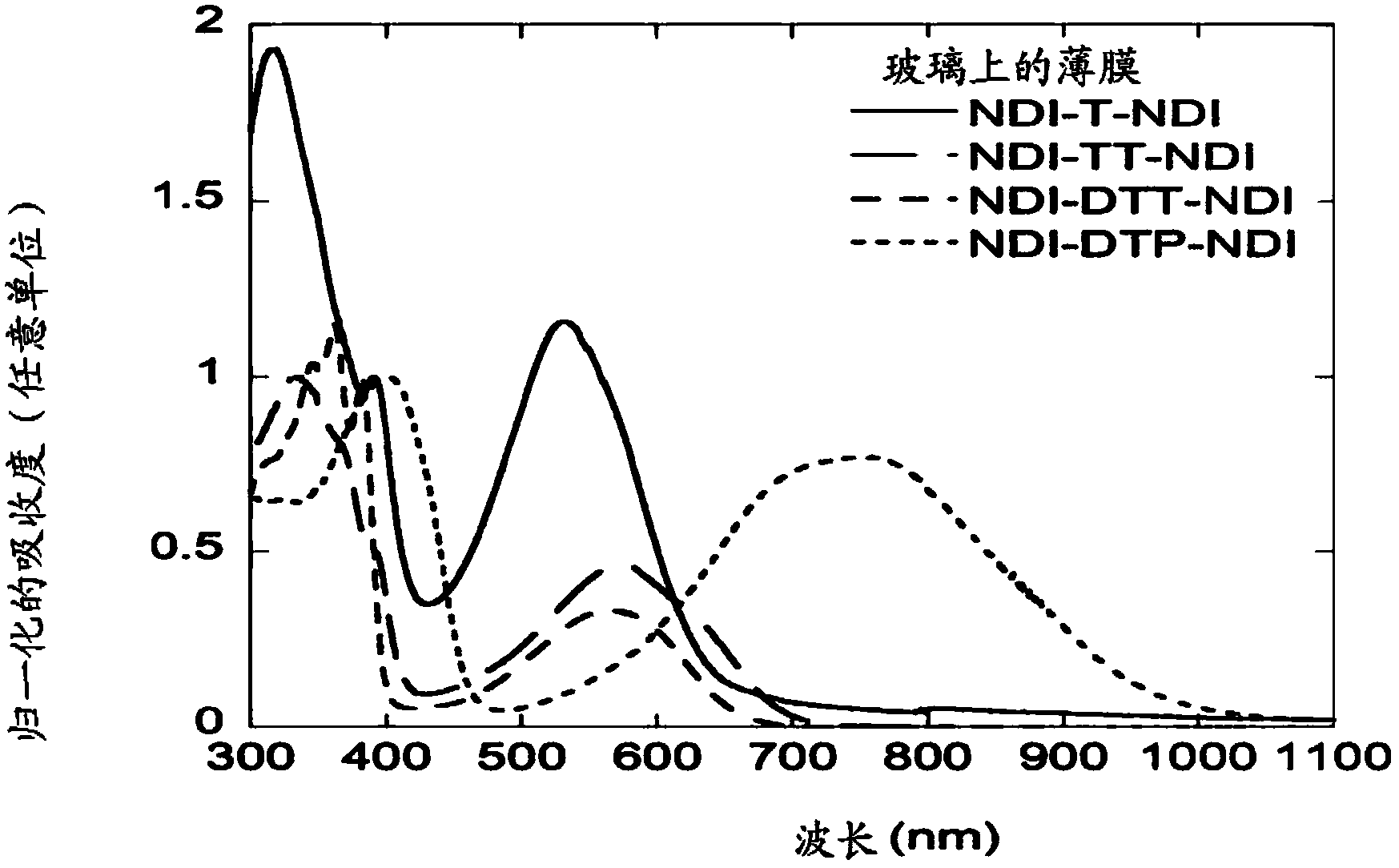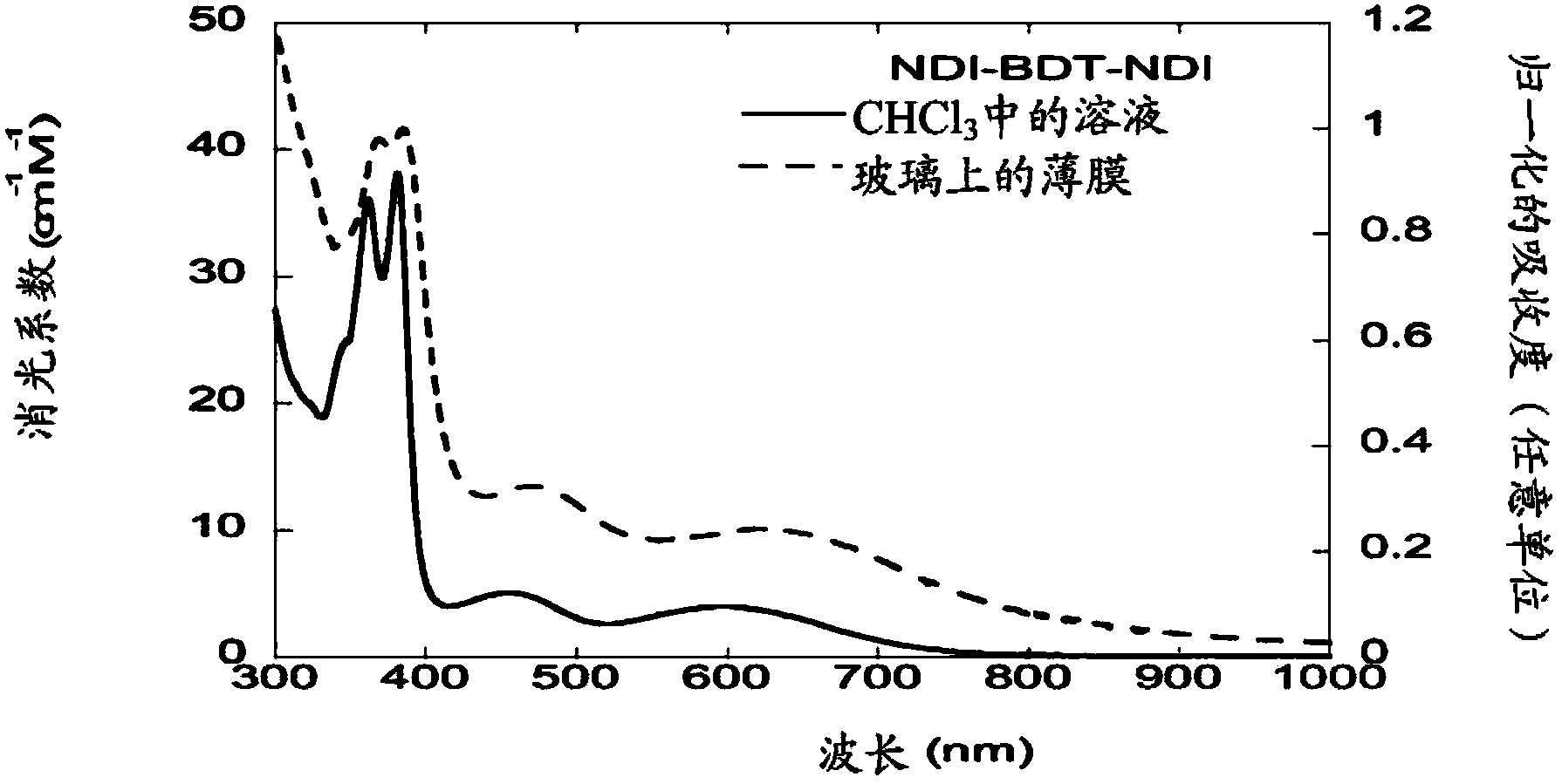Naphthalene-diimide-heterocycle-naphthalene diimide oligomers as organic semiconductors and transistors therefrom
A naphthalene diimide, organic group technology, applied in the field of naphthalene-diimide-heterocycle-naphthalene diimide oligomers as organic semiconductors and transistors derived therefrom, can solve the problem of no measurement , undesired, reduced field-effect mobility, etc.
- Summary
- Abstract
- Description
- Claims
- Application Information
AI Technical Summary
Problems solved by technology
Method used
Image
Examples
example 1-N
[0234] Example 1-N, N'-bis(n-hexyl)-4-bromonaphthalene-1,4:5,8-bis(dicarboximide) synthesis
[0235]
[0236] A solution of naphthalene-1,4:5,8-tetracarboxylic dianhydride (10.0 g, 37.3 mmol) in concentrated sulfuric acid (370 mL) was heated to 85°C. 1,5-dibromo-4,6-dioxo-1,4,5,6-tetrahydro-1,3,5-triazine potassium salt (1,5-dibromo-4,6-dioxo-1 , 4,5,6-tetrahydro-1,3,5-triazin-2-olate) (6.06 g, 18.64 mmol) was dissolved in concentrated sulfuric acid and added by cannula. The mixture was allowed to stir at 85°C for 48 hours. After cooling, the reaction mixture was poured into ice. The resulting yellow precipitate was collected by filtration and washed with methanol, and dried under vacuum. The yellow solid was transferred to a flask with glacial acetic acid (370 mL) and n-hexylamine (15.1 g, 0.149 mol). The reaction mixture was refluxed for 20 minutes, allowed to cool overnight, and poured into 1500 mL of methanol. The resulting precipitate was collected by filtrati...
example 2-2
[0238] Example 2-2,7-Dihexyl-4-(tributylstannyl)naphthalene-1,4:5,8-bis(dicarboxylic acid imine) synthesis
[0239]
[0240] N, N'-bis(n-hexyl)-2-bromonaphthalene-1,4,5,8-bis(dicarboximide) (1.45g, 2.82mmol), 1,1,1,2, A solution of 2,2-hexabutyldistannane (1.64 g, 2.82 mmol) and tri-o-tolylphosphine (0.172 g, 0.565 mmol) in dry toluene (30 mL) was degassed with nitrogen for 5 minutes. Tris(dibenzylideneacetone)dipalladium (0.129 g, 0.141 mmol) was added, and the reaction was heated to 90° C. for 24 hours. After cooling, the reaction mixture was precipitated in methanol, and the solid was removed by filtration, and the solvent was removed under reduced pressure. The crude product was purified by column chromatography (silica, dichloromethane) to give (2,7-dihexyl-4-(tributylstannyl)naphthalene-1,4:5,8-bis (dicarboximide), 1.53 g, 2.11 mmol, 74.9%).
[0241] 1H NMR (400MHz, CDCl3) δ8.94(s, 1H), 8.70(d, J=7.6Hz, 1H), 8.67(d, J=7.6Hz, 1H), 4.18(t, J=7.6Hz, 2H ), 4.16(t,...
example 3
[0242] Example 3-"NDI-T-NDI": 4,4'-(thiophene-2,5-diyl)bis(2,7-dihexylnaphthalene- 1,4:5,8 - Bis(dicarboximide)) Synthesis:
[0243]
[0244] 4-Bromo-2,7-dihexylnaphthalene-1,4:5,8-bis(dicarboximide) (1.00g, 1.95mmol), tri-o-tolylphosphine (0.056g, 0.185 mmol), and a solution of 2,5-bis(tributylstannyl)thiophene (0.610 g, 0.930 mmol) in anhydrous dimethylformamide (20 mL) were degassed with nitrogen for 5 minutes. Add tris(dibenzylideneacetone)dipalladium(0)(Pd 2 (dba) 3 ) (0.046 g, 0.048 mmol), and the reaction was heated to 150° C. for 2 hours. After cooling, the reaction mixture was diluted with chloroform and washed 3 times with deionized water. The solution was dried over anhydrous magnesium sulfate and filtered through a plug of celite. The crude product was purified by flash chromatography (silica gel, 2% ethyl acetate in chloroform). Precipitation of the product from methanol and hexanes yielded the product as a purple solid (4,4'-(thiophene-2,5-diyl)bi...
PUM
 Login to View More
Login to View More Abstract
Description
Claims
Application Information
 Login to View More
Login to View More - R&D
- Intellectual Property
- Life Sciences
- Materials
- Tech Scout
- Unparalleled Data Quality
- Higher Quality Content
- 60% Fewer Hallucinations
Browse by: Latest US Patents, China's latest patents, Technical Efficacy Thesaurus, Application Domain, Technology Topic, Popular Technical Reports.
© 2025 PatSnap. All rights reserved.Legal|Privacy policy|Modern Slavery Act Transparency Statement|Sitemap|About US| Contact US: help@patsnap.com



